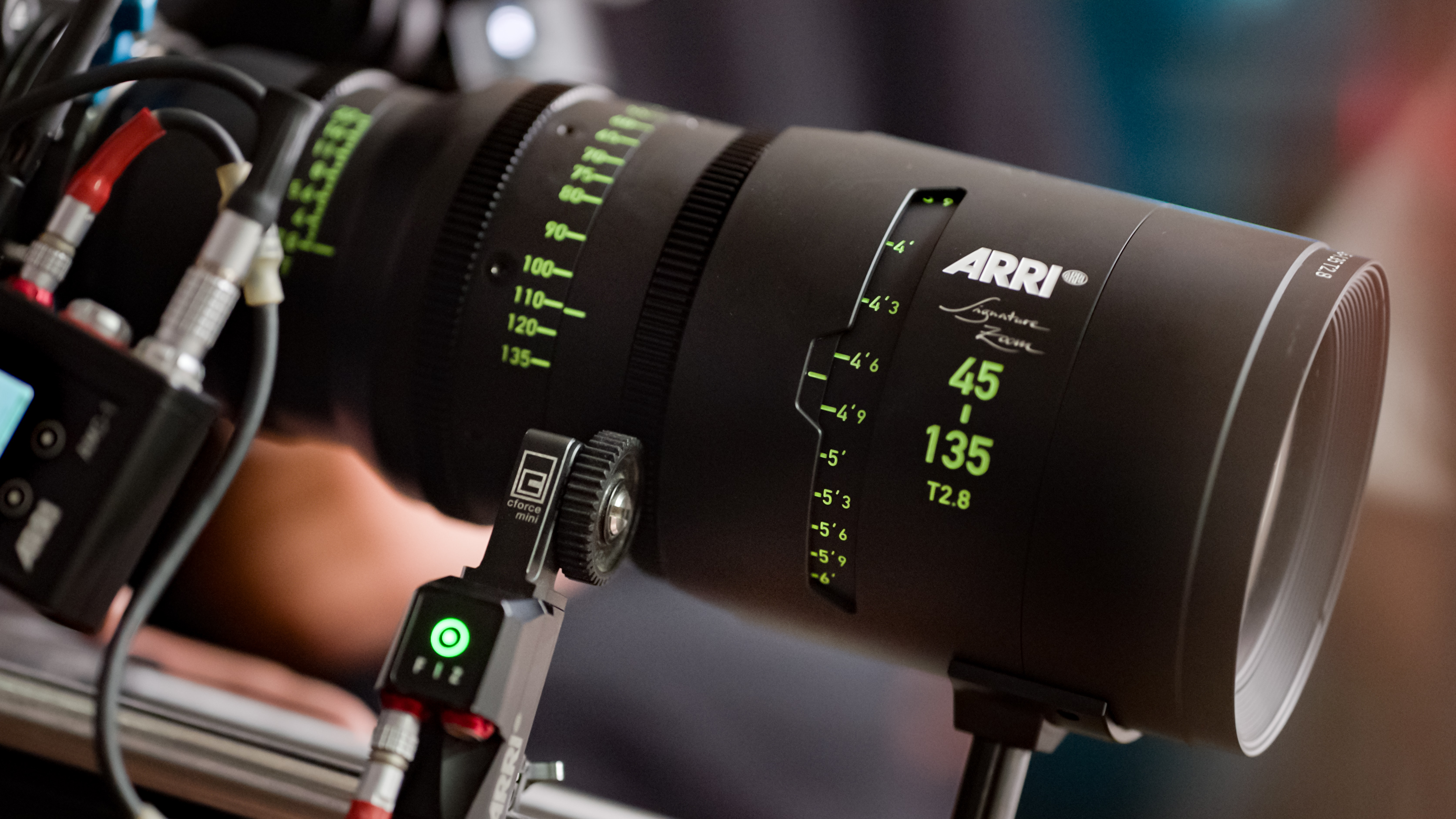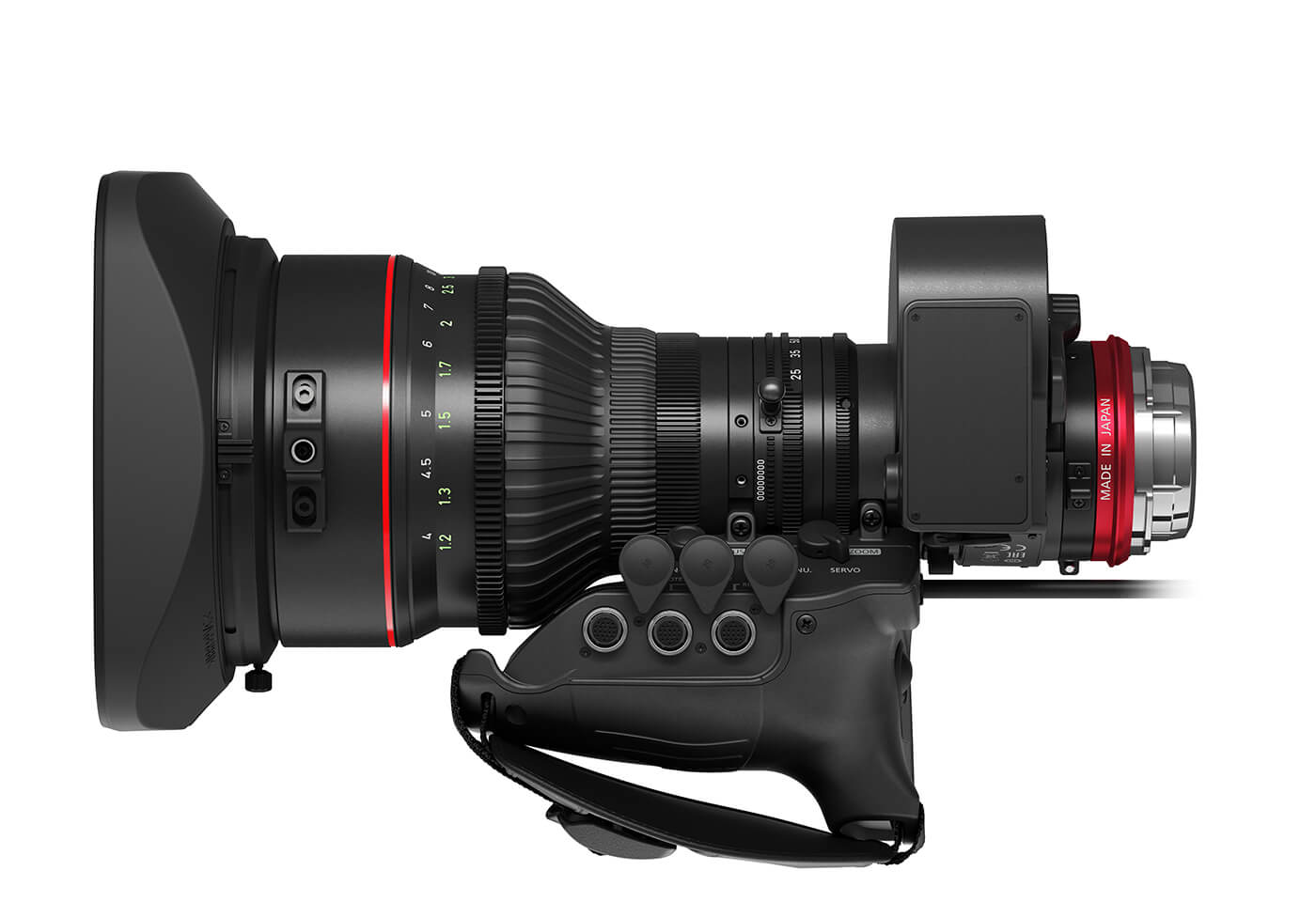A New Look for Lenses
Higher-res displays prompt vendors to clarify focus

LONDON—Lenses, even though they sit prominently on the front of cameras, still tend to get overlooked. There continues to be a tendency towards asking “what camera did you use?” first, rather than about the lens.
Maybe it’s because lenses smack a little of old school physics, all focal length and the circle of confusion. But it is the optical component that primarily creates the look of a program. At one time in broadcasting, a lens was just another tool, but in these days of 4K, HDR and beauty shots, it is an ever more important one.
GROWING DEMAND FOR UHD CONTENT
Such requirements are already established for shooting top-end dramas and documentaries, which have long had cinematic sensibilities, but similar considerations have been made for studio and outside broadcast (OB) production since the advent of HD.
That is only set to increase as the demand for UHD grows, with, as Claus Pfeifer, head of connected content acquisition at Sony Professional Europe, points out, the need to accommodate a recent trend in camera technology.
“In both studio and OB work, we’ve seen the demand for large frame sensor-based cameras grow,” he says. “To complement and enhance the traditional 2/3-inch equipment, we’ve seen a matching trend in lenses.”
Large frame (LF) cameras have become the preferred format for filmmaking in the last few years. There has also been a renewed taste for shallow depth of field, which creates a narrower zone of sharp definition in a shot, which directs the viewers' attention to a specific part of an image.
Get the TV Tech Newsletter
The professional video industry's #1 source for news, trends and product and tech information. Sign up below.
Pfeifer says this is becoming increasingly popular and demanded in sectors outside of cinema, which is placing more requirements on lenses. “In live or quickly moving environments, auto focus is more crucial because, with the shallow depth of field, focus has become absolutely critical,” he explains. “We have integrated linear focus motors to ensure that lenses focus smoothly and accurately.”
MEETING FUTURE DEMANDS
The fast-moving pace of broadcasting, both in the studio and on location, calls for equipment that can be trusted by those using it to get the shots as they happen. “Operators expect controls that match the speed of their reflexes,” agrees Peter Crithary, vice president of marketing and market development at ARRI. “And technical directors want to see a technically superior image. [Because of this] broadcast lenses require range, responsiveness and the resolution to match the capabilities of the cameras with which they are paired.”

Outlining the main requirements for broadcast lenses, Jake Ratcliffe, technical marketing manager at U.K. film and TV equipment distributor CVP, highlights excellent long focal range with good consistent performance throughout; fast operation through either traditional three-ring controls or a Servo drive unit (with fast, accurate remote control according to zoom and focus demands); and parfocal optical design. “Having extenders built into lenses is very handy as well,” he adds.
As to the vision formats now being requested by broadcasters, Fujifilm reports that although HD is still in use, 90 percent of the new sales it is seeing are for its 4K box and ENG lenses. HDR is usually mentioned together with 4K; to suppress flare and accurately transmit the blacks in a video image, Fujifilm developed the HT-EBC coating, which was introduced in 2016.
New opticals have been designed to work with HDR technologies, including ARRI's Signature series. Peter Crithary comments that building lenses now means thinking beyond existing display technologies.
“Footage shot today will still be viable many years from now,” Crithary said. “We don’t know exactly how future audiences will view that footage but we know they will see it in higher resolution and dynamic range than we see today. HDR is here and 1,000 nit [the metric unit for brightness] displays in homes will become commonplace in a few years. UHD is available through most streaming services, 8K may be next. As displays become more immersive, we need lenses that complement that trend rather than fight against it.”
Ratcliffe observes that the growing popularity of 4K programming has confirmed the need for improved optics. “Older broadcast lenses designed for lower resolutions and smaller sensors will perform much worse than their modern counterparts,” he says. “Luckily the major lens brands creating broadcast-style lenses have been updating their line-ups with options for higher resolution acquisition. This also includes higher performance for the increased HDR spec, with improved resolving power and aberration control.”
Among its brand of lenses available, CVP offers Canon’s CN10 cine-servo lens, and Ratcliffe says that particular glass is a good example of how optics will develop.
“It improved the optical quality over the CN7 and gave us extra range with a longer tele end as well as a 1.5x extender, which also gives the lens full-frame coverage,” he said. “Optical improvements will also be key when virtual production becomes the norm.”
MORE VERSATILITY
Pfeifer is of the opinion that lenses will become increasingly versatile, allowing users to select the few that really suit their needs. “However, a wide range of lenses will be on the market or in development to meet the demands of the creative industry,” he comments. “We’re also seeing the mount really start to matter. Sony’s E-mount was designed to be used for both stills and moving pictures, with APS-C/Super 35mm and full-frame sensors.”
Lenses are both scientific and artistic, with a structure that can be defined by physics combined with less definable characteristics, something Crithary concludes will both play a role in future designs.
“Tangible and intangible optical quality will be equally important,” he says. “As audiences see better and better images, it will be imperative to figure out how to deliver images that are not just technically exceptional but aesthetically pleasing. The latter is the hard part because how does one define it?”
Despite the scientific principles available to describe the optical properties of lenses, they are more likely to be spoken of in terms that are less definable, although most people would recognise what was meant by “warm,” “soft” and “real.” In the end, “the look” is important and it is increasingly so in broadcasting. Which probably makes the lens even more essential than the thing to which it is attached.
